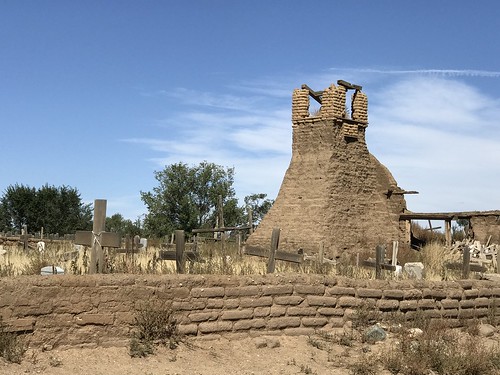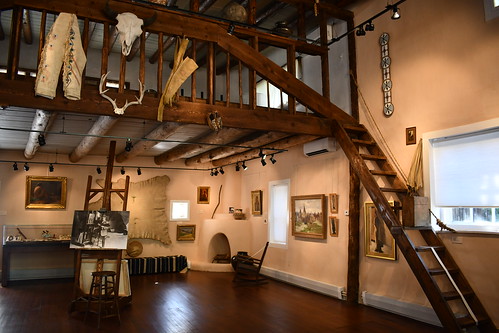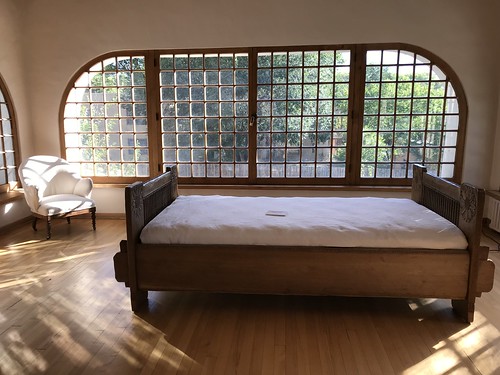History Comes Alive in Taos, New Mexico
Where in the United States can you visit the oldest continuously inhabited Native American community, a town square dating to the end of the 18th century, a world-renowned art community, and a world-class ski resort? Taos, New Mexico is the correct answer. While many people visit Northern New Mexico for its moderate climate and Rio Grande Valley scenery, history comes alive in Taos.

According to the Taos Pueblo website, the adobe buildings were constructed between 1000 and 1450 CE. Social scientists believe that these people are related to the Ancestral Pueblo people who settled in Chaco Canyon, Mesa Verde, and at Chimney Rock National Monument. The Taos Pueblo has adobe buildings located in a picturesque valley setting with a stream flowing through the community.
In the 16th and 17th centuries, the Spanish were met with resistance from the indigenous people who didn't want them to settle near them. The Don Fernando de Taos Plaza was established in conjunction with the Don Fernando de Taos Land Grant given to 63 families in 1796. These families built their residences and businesses in the plaza so that they could be protected by the windowless walls and gates. The residents also had access to water in a centrally located well. In the early days, the plaza was used as a gathering place for social events and for trading. In later years, the square had a jail, hotels, and saloons. Unfortunately, fires destroyed the original structures.
In 1915, the Taos Society of Artists was formed by Bert Phillips, Ernest Blumenschein, Oscar Berninghaus, Joseph Sharp, E. Irving Couse, and Herbert Dunton. A few years earlier, in 1898, Blumenschein and Phillips, two young artists from New York, had stopped in Taos when their wagon wheel broke. They convinced other like-minded artists to join them in establishing an artist colony in Taos that lasted until 1927. Decades later, the region remains a magnet for artists.
The dream of Ernie Blake and his wife, Rhoda, led to the establishment of the Taos Ski Valley in the mid-1950s. European born Ernst Bloch emigrated to the United States before World War II. While working for military intelligence during the war, his name was changed to Ernie Blake. He used his German-speaking skills to interrogate prominent Nazis. After the war, he helped manage two ski areas in New Mexico and Colorado. One day, while flying his airplane between the two locations he spotted the mountainous region near Taos. Ernie, along with his wife and their family, became committed to creating a new ski area. Over time the ski area became a world-class resort. The Blake children sold the resort to an investor in 2013.
We made the most of our brief visit to Taos by exploring parts of the town's rich history. We had a complimentary stay at the Historic Taos Inn and ate dinner at Doc Martin's. The conveniently located Taos Inn has 45 unique guest rooms. The main building houses a small number of guest rooms while the remaining rooms are clustered around courtyards. The accommodations vary considerably. Some have been renovated recently, whereas others require updating.
The restaurant is named after Dr. Thomas Paul Martin, who arrived in the area in the 1890s. He was the first physician. The restaurant sits on the site of his medical office. His artistic wife, Helen, was related to Bert Phillips, one of the Taos Society of Artists founders. While living in Taos, the couple purchased several adjacent adobe buildings. After Dr. Martin passed away, his wife turned the property into a hotel. Subsequent owners have used the historic site as a hotel and made additions. The Inn was recognized by the National Register of Historic Places in 1982.
To gain an overview of the town, we took a Taos Trolley Tour, which included a brief history lesson along with an hour stop at the Taos Pueblo and a photo stop at the San Francisco de Asis Church. In the afternoon, we wandered around the town and spent time in the Couse Sharpe Historic Site and the Taos Art Museum at Fechin.

Taos Trolley
TROLLEY TOUR
Brief History
Before leaving the pickup point at the Taos Plaza, our guide, Dave, shared a brief history of the early settlers. They sought protection behind the adobe and wood fortress that protected them from hostile Native Americans. The Spanish settlers' desire to colonize the area were met with repeated episodes of opposition and violence. The 19th century brought American traders and U.S troops.
Charles Bent, the first governor of the territory, was killed for his arrogant and condescending attitudes. Bent was murdered during the Taos revolt by Native Americans.
A statue in the Plaza of Padre Antonio Martinez (1793-1867) helps future generations recall his positive contributions to the community and his civility to Native Americans. He started the first school for both boys and girls and printed the first books. Ironically, Bishop Lamy excommunicated Martinez because he went against church doctrines by advocating for the rights of the Spanish and the native New Mexico people.
Dave pointed to the La Fonda Hotel, the oldest remaining structure, originally built in the 1820s as the mercantile building. The first jail and courthouse were rebuilt in the 1930s. A gazebo in the square was donated by Mable Dodge Luhan (1879-1962), a socialite who hosted Georgia O'Keeffe, D.H. Lawrence, Ansel Adams, Margaret Sanger, and many other personalities.
Taos Pueblo
After a short ride, we stepped off the trolley for our one-hour tour of the Taos Pueblo, a UNESCO World Heritage Site and National Historic Landmark. A college student shared his family's heritage and life at the Taos Pueblo. The homes inside the community are not permitted to have electricity or running water. Only a small number of people live in these primitive conditions. Most live outside the walled area of the Taos Pueblo.

Taos Pueblo
Efforts continue to this day to maintain the integrity of the historic adobe structures. We observed molds that were filled with a mixture of water, mud, and straw that would be sun-dried to become two to four feet thick bricks. The exterior surface of each building needs to be repeatedly plastered. To this day, a hierarchy of males enforces tribal laws which govern the people, who believe their ancestors have always lived at the Taos Pueblo.

Taos San Francisco de Asis Church Exterior
Our group stopped near the ruins of a church surrounded by a crowded cemetery and later on walked inside the San Geronimo Catholic Church constructed in the mid-19th century. Two previous churches (both built in the 17th century) were destroyed by the Ancestral Pueblo, who were resisting the missionaries. The third church was attacked by the U.S Army during the Mexican American War. These churches show how outsiders affected the indigenous people's history and belief system. Today, the majority of the Ancestral Pueblo practice their native religion along with Catholicism.

Pueblo Ruins of 3rd Church
In his early years, our guide attended the Taos Pueblo school, where he learned the native language, which is passed on to future generations as an oral tradition and is not shared with outsiders. Food recipes are likewise handed down from one family member to the next. We were shown several honro ovens that were borrowed from the Spanish.
While standing in front of the fast-moving Red Willow Creek, a small stream originating at Blue Lake in the Sangre de Cristo Range, our guide proudly recalled the tribe's ability to reclaim their sacred lake. After 64 years of protesting, President Nixon returned the 48,000 acres of mountain land that had been taken away by the U.S government in 1906. Currently, Blue Lake can only be enjoyed by Taos Pueblo members, and the creek continues to be the community's primary source for drinking, cooking, bathing, and religious rituals.
Unfortunately, we only had about 10 minutes to wander in and out of the structures to check out what the local artisans were selling. Anyone interested in Native American art should set aside more time.
One cannot help but admire the resilience of a people who were continually besieged by outsiders. Our young guide's parting words reflect his people's inherent tenacity. "We are still here. We are culturally strong people who have preserved our culture and are willing to pass it on to the next generation."
Before planning a visit, I recommend that you check the Taos Pueblo website. Festivals and special occasions may restrict visitation times.
San Francisco de Asis Church
Notable artists such as Georgia O'Keeffe and Ansel Adams drew attention to this church constructed in the early part of the 19th century. Historians point out that this is the only church from this period. Notable features of this Spanish colonial style church include oversized adobe buttresses and two front-facing bells.
To preserve the integrity of the adobe structure, the community comes together each June to re-plaster the exterior.
The site has been designated as a National Historic Landmark.
WALKING TOUR
Couse-Sharpe Historic Site
With interest in Native American history and art, I was immediately fascinated by what I learned about Joseph Henry Sharp (1859-1953) and Eanger Irving Couse (1866-1936). Sharp is best known for his paintings of Native American subjects and his chronicling the vanishing West. His works are housed in what was once his first Taos studio, an old converted chapel.

Sharp’s Balcony and Main Floor Studio
From 1891 to his death in 1936, Couse created almost 10,000 photographic images of Taos Pueblo models. His work provides a window into the 19th and early 20th-century art and Native American culture. Sharp is considered the "spiritual father" of the Taos Society of Artists, and Couse was the organization's president for the first five years.

Couse’s gelatin silver print of Ben Lujan and Joseph Sunhawk, c.1909

Inside Couse’s Photographic Studio
The site allows visitors to view the work and creative spaces of both artists. During the Couse's residency, their home was expanded and a garden was added to enhance the hillside. Their son, Kibbey, converted the adjacent garage into a work area for his mechanical inventions.

Couse Sharp Kibbey’s invention room

Inside Couse Dining Room
European trained Sharp became fascinated with Native Americans and traveled west. Trips took him to Santa Fe, Taos, and Crow Agency in Montana. In 1908, Sharp established his residence in Taos. He lived and worked on the property next door to the Couse's. Since the Sharps did not have any heirs, Kibbey purchased the Sharp properties. While Sharp's home no longer exists, two of his studios are part of the historic site that is now owned and managed by the Couse Foundation.

Sharp’s Oil on Canvas from Collection of Buffalo Bill Center of the West
As we strolled through the site, I felt as if I was going back in time. Even though it has been decades since these artists passed away, I felt their presence. The Couse home is decorated with original furnishings and personal items. The studios have work areas that appear as if the artist has simply taken a momentary break.

Couse Workspace
The site is on the National Register of Historic Places. Tours are available from Tuesday to Friday by appointment only. The tour can last between 1½-2 hours.

Couse Sharpe Historic Site Entrance
Taos Art Museum at Fechin House
If I had to sum up our hour in the Fechin House, I would simply say, "wow." Nicolai Fechin (1881-1955), a notable Russian born artist, enlarged an eight-room adobe home into a magnificent 4,000 square foot home off of the main street in Taos.

Fechin House Art Studio Windows
When his marriage ended in divorce in 1933, the five-year project of building an adobe home with two-foot thick walls had not been completed. Nicolai left Taos with his daughter while his ex-wife stayed behind. One of Nicolai’s portraits of his daughter, Eya, was captured on my camera.

Fechin House Nicolai’s Portrait of his daughter Aya
Fechin is remembered as an award-winning 20th-century portrait painter as well as a painter of Native Americans and desert landscapes. He emigrated to the U.S in the 1920s when the situation in Russia was deteriorating. After living in New York City, he was encouraged to move to Taos, New Mexico, where he initially rented a house from Mabel Dodge Luhan.
Decades later, the Fechin home remains an incredible masterpiece, filled with a mixture of Russian, Spanish, and Pueblo architectural styles and Russian, Siberian, European, Art Deco, and Native American elements. When the home was completed, it had the first electric stove, oven, and refrigerator in town.
We oohed and ahhed as our guide, Cindy, pointed out fine details like the hand carvings throughout the house or the fantastic placement of windows capturing the home's surroundings. Sugar pine from Oregon with no knots made carving easier while cherry wood was installed on the floor. Nicolai used his coppersmith talents to design the hardware and fixtures throughout the home. Benches conveniently cover the unattractive radiators. The neutral colored plaster accentuates the colors of the hanging artwork and woodwork.

Fechin House Master Bedroom
Standing in his spacious studio with massive north facing windows, I felt a profound sense of loss. Such an amazing place to paint was abandoned when he left this home.
In 1979, the Fechin house became part of the National Registry of Historic American Homes and the State of New Mexico Registered Cultural Properties.
Additional Historical Places
With only two days in town, we could only visit some of the historical sites. If you have more time, consider stopping at the Harwood Museum, La Hacienda de Los Martinez, the Governor Bent House, the Kit Carson Home and Museum, the Mabel Dodge Luhan House, the Ernest Blumenshein House, the Millicent Rogers Museum, spending time at the Taos Plaza or taking a self-guided tour around the historic district.

Taos Plaza at night
Taos is less than a five-hour drive from Denver and only two and a half hours from Albuquerque. A visit to Taos can easily be combined with a stay in Santa Fe which is just 70 miles away. Spring and fall are ideal times to see history come alive in Taos.
Sandy Bornstein, the History Comes Alive Through Travel Editor for Wandering Educators, has visited more than 40 countries and lived as an international teacher in Bangalore, India. Sandy’s award-winning book, May This Be the Best Year of Your Life, is a resource for people contemplating an expat lifestyle and living outside their comfort zone. Sandy writes about Jewish culture and history, historical sites, family, intergenerational, and active midlife adventures highlighting land and water experiences.
All photos courtesy and copyright Sandy Bornstein
The Waite Company hosted the Traveling Bornsteins stay in Taos. They received a complimentary stay at the Historic Inn, a dinner at Doc Martins, and complimentary tickets for the trolley and admission to the two museums.



















